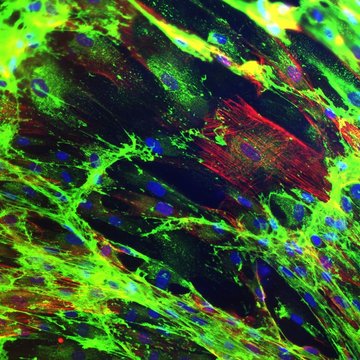

RNDr. Tomáš Etrych, DSc. — Program head
Biomaterials and Tissue Engineering
The programme is focused on advanced trends in medicine aimed at usage of sophisticated tissue prostheses systems composed of synthetic materials combined with specific biologically active compounds and cells for regeneration and replacement of diseased tissues and organs or for controlled drug and gene delivery targeted to specific tissues and cells in diseased organism. The programme feasibility is guaranteed by the close collaboration of “synthesis” teams concerned with the development and synthesis of artificial carriers for cells, therapeutics and diagnostics, and “biomedicine” teams concerned with applications of cells, including stem cells, development of bioartificial grafts for tissue engineering, and testing therapeutic and diagnostic systems. The basic common activities of the “synthesis” teams consisting in synthesis of polymer materials with attached biologically active components will be based in general on investigation and testing interactions of cells and tissues with the biomaterials directed to specific medical applications.
Application Potencial
The overall aim of the applied research within this programme is to develop technologies for preparation of the intended products and to standardize this preparation so that it is possible to transfer these technologies over to clinical practice. Planned outputs include: bioartificial blood vessel, valve, bone, and cartilage grafts, scaffolds for therapy of spinal cord lesions, targeted drug, gene, and diagnostics delivery systems for therapy and diagnostics of cancer and cardiovascular diseases, biosensors and protein chips, and affinity carriers for separation and purification of biological fluids and suspensions.
Research Outcomes:
- New synthetic methods for controlled preparation of supramolecular dendritic, hyperbranched, star-shaped, and comb-like water-soluble polymer structures
- High-molecular water-soluble polymer transport systems for the targeted delivery of drugs, diagnostics, and their combinations
- In vitro and in vivo biological evaluation of new high-molecular-weight polymer conjugates in selected animal neoplastic and cardiovascular models
- Magnetic carriers based on polymethacrylates and polymethacrylamides, easily accessible for various chemical modifications enabling immobilization of biologically active molecules
- Anti-fouling polymer layers with covalently attached bioreceptors for SPR biosensors detecting selected analytes in the blood serum, plasma and blood
- Superporous biodegradable hydrogels as scaffolds for regeneration of soft tissues and replacements of cartilage and damaged spinal cord
- Newly constructed bioarteficial tissue grafts (blood vessels, heart valve, bone, skin)
- Innovated grafts of blood vessel and bones prepared by modification of currently clinically used grafts
- Systems for targeted drug delivery
- Biosensors and stimulators of cell functions
- Protocols for stem cell differentiation into clinically relevant lines, clinical and preclinical studies to verify safety and efficacy, and tissue reconstruction methods
- Methods for separation, culture and differentiation of stem cells from human epidermis
